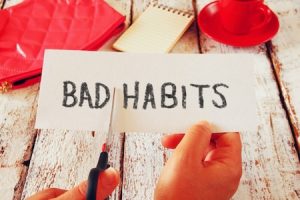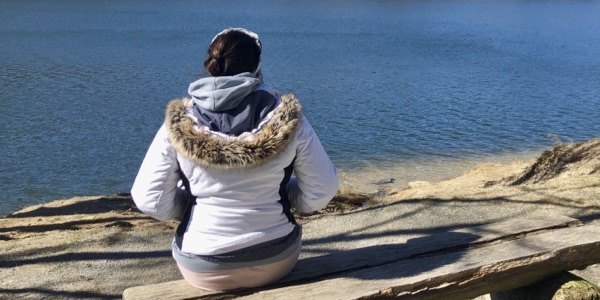Mindfulness tools for getting through the day and beyond
From surviving to thriving after 2020
Wellness
The year 2020 will forever be remembered by an unexpected viral illness. As we enter a new year, it seems appropriate to dedicate 2021 to prioritizing and understanding wellness. The Global Wellness Institute, a nonprofit dedicated to spreading wellness throughout the world, defines wellness as “the active pursuit of activities, choices, and lifestyles that lead to a state of holistic health.”
This description resonates with me because it places wellness within our control. Wellness is actively taking control or power over our personal wellbeing. With that power comes responsibility. This can sometimes leave us feeling guilty if we’re not exercising, eating, and treating our body “well.”
As a mindfulness teacher, I can assure you that wellness isn’t limited to the body. Release the guilt if your eating and exercise habits have deteriorated, especially after being housebound in 2020. In my experience, to make wellness sustainable, we must begin with our minds. Strengthening our minds allows us to connect with and care for our bodies. It’s hard to heal a body to which you don’t feel connected.

Wellness is actively taking control or power over our personal wellbeing.
The subconscious


Neuroscience teaches us that the mind and body are profoundly intertwined, yet we tend to underestimate the immense power of the mind over our health. You know where your body is at all times, but your mind can wander off without even being missed. This is because humans can accomplish a slew of tasks on autopilot, led solely by our subconscious minds. The subconscious can be a pesky little troublemaker, instigating bad habits as soon as the conscious mind disappears. The subconscious is the culprit who scarfs down the bag of chips, whispers thoughts of unworthiness in your ear, and acts impulsively, sometimes even resulting in destructive or addictive behavior. The way to oust the subconscious and put the conscious mind back in the driver’s seat is through mindfulness.
Mindfulness


Think of mindfulness as fitness for the mind, or deliberately using the mind to regulate both the mind and body. Doing things deliberately, or consciously, uses much more energy than acting by reflex only. Since our brains were wired to act reflexively to save energy, being conscious or present isn’t our default mode. Presence requires some training and rewiring of the brain. Mindfulness is that training. My interpretation of mindfulness includes four components: being present; with compassion; with curiosity; without judgment. When we approach difficult situations with these four elements, we gain control over our behavior and emotions. Mindfulness also includes qualities like gratitude, empathy, and impermanence. It teaches us to be thankful, feel for others, and understand that circumstances constantly change. These are essential concepts for thriving.
Breathing


Mindfulness encompasses various techniques, of which the best known are breathwork and meditation. Breathwork is the quickest reset tool for acute stress. When you’re triggered into fight or flight mode, also known as survival mode, your body releases stress hormones like adrenaline and cortisol. Your heart rate increases, blood rushes to your extremities in preparation for fighting or fleeing, and your mind fixates on the threat or stressor. Whether it’s a harsh email from a client, a triggering Facebook post, or a troubling medical diagnosis, the quickest way to find calm and perspective in that moment is through your breath. By extending exhales longer than inhales, you hit the brake pedal on the stress response, moving from survival mode into rest and restore mode. Breathwork uses the body to send signals back to the brain, allowing us to reset. There are abundant breathwork techniques to alter mental states, but exhale-oriented breath is the most effective real time solution for acute stress.
Meditation


Meditation, which some misunderstand as a woo-woo waste of time, is actually quite the opposite. It’s an incredibly effective tool for treating chronic stress, depression, and many ailments. Meditation involves finding stillness within the mind while connecting to the body. It often entails sitting down with your eyes closed, and finding an anchor – like your breath – to which you guide your awareness each time your mind wanders.
The benefits of meditation transcend the meditation pillow, teaching you to become the observer of your thoughts, instead of being trapped in them. This minimizes the control your thoughts have over your life. For example, let’s say you’re feeling deeply discouraged. Meditation trains you to move into awareness, recognizing what your underlying thoughts are: “I’m behind at work while my colleague just got a promotion. I’m a failure. I’m unworthy.” Next, you adjust your thoughts, retelling your story with self compassion and perspective, stating, “I’m struggling as all humans do. My colleague also struggles sometimes. I’m not a failure. My suffering is temporary.” Over time, meditation can make these steps become reflexes or good habits!
Daily practices


Mindfulness is a way of life that starts with small shifts. Too often we set ourselves up for failure by biting off more than we can chew. Instead, take baby steps, or baby bites, always moving forward. Below is a list of 10 daily tools for wellness, based on mindfulness and neuroscience principles. Begin by choosing what’s feasible for you at this moment, and advancing as you’re ready. The key is consistency. It’s more effective to use one tool every day than 10 tools sporadically. Remember to be compassionate with yourself. Be present, be mindful, be well!
10 daily mindfulness tools
1. Get morning sun – Enjoy 10-20 minutes of early outdoor sunlight within an hour of waking.
2. Meditate – Start with 3 minutes each day, then build up as ready. Try a walking meditation.
3. Eat mindfully – Take the first 3 bites with eyes shut in silence. Savor your food.
4. Move through nature – Get outside, move your body in some way, and view a horizon.
5. Find gratitude – Write down three things for which you’re grateful.
6. Focus on four – Embody the four traits: presence, compassion, curiosity, non-judgment.


7. Do check-ins – Ask yourself “What am I thinking, feeling, and believing right now?” Journal it.
8. Practice compassion – Start with yourself. Be kind and forgive throughout the day.
9. Recognize your enemies – They are shame, blame, and destructive thoughts.
10. Unplug by 11 p.m. – Avoid bright light (including screens) ideally from 11 p.m. – 4 a.m.
Mindfulness resources
Breathe To Succeed: Increase Workplace Productivity, Creativity, and Clarity Through The Power Of Mindfulness, by SandyAbrams; Published by Career Press; available on Kindle.
The Mindful Day: Practical Ways to Find Focus, Calm, and Joy from Morning to Evening, by Laurie J. Cameron; Published by National Geographic Partners LLC; available on Kindle.
Intro To Meditation With Body Scan with Gianna Vallefuoco; https://bit.ly/3owTwJ0
Apps: Insight Timer, Calm, Ten Percent Happier, Smiling Mind, Soulvana








